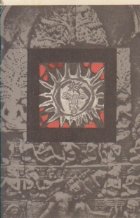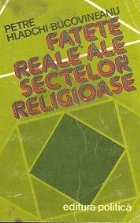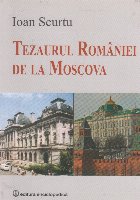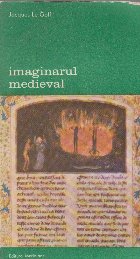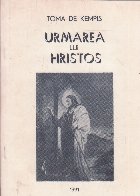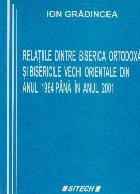Descriere
The volume includes selected papers of the fifth APECSS annual conference (Sendai, Japan, 2009) and other patristic studies. The conference papers deal with the letters from Christian Antiquity, from apostle Paul up to Theodore the Studite (ninth century), considered in different aspects, namely, historiography of studies, literary form, Church history, dogmatic contents, attribution, etc. Among the considered authors are Ephrem the Syrian, fathers of the Pachomian coenobium, Jerome, John Chrysostom, Eusebius of Vercelli, Augustine, Dionysius the Areopagite, Severus of Antioch. The other patristic studies are dedicated to the St Sophia church in Constantinople (its hagiographic program compared with that of the Holy Sepulchre church in Jerusalem; in appendix, the first English translation from Georgian of the sermon of John of Bolnisi on the consecration of Jerusalem churches), the program of unification between Christianity and Islam by George of Trebizond (fifteenth century Byzantine thinker), recuperation of the sources concerning the eleven monasteries founded by St Pachomius in Egypt, dogmatic views of Anthony Bulatovich (a Russian Palamite theologian of the early twentieth century) expressed in the Church polemics about the veneration of the Name of God. The volume also contains notes on the Qumranic calendars in their main contexts, Christian Ethiopian astronomical treatises and Babylonian astronomy, and book reviews.
Table of Contents
- Table of Contents (page 7)
- List of Abbreviations (page 10)
- Patrologia Pacifica Secunda (page 13)
- Preface (page 15)
- Beyond the Original Context:Reception of the Pauline Letters in the First Century (page 17)
- Introduction: the Primary and Secondary Context of the Pauline Letters (page 17)
- 1. Readership of the Pauline Letters (page 18)
- 2. The Compilation of Pauline Letters (page 23)
- 3. Corpus Paulinum (page 24)
- 4. The Deutero-Pauline Letters (page 26)
- 5. The Catholic Letters (page 30)
- Conclusion (page 31)
- Summary (page 33)
- The Reception of the Pauline Letters and the Formation of the Canonical Principle in Origen of Alexandria (page 34)
- 1. Origen and the Alexandrian Exegetical Tradition (page 34)
- 2. The Ebionites and Other Jewish Christians in Alexandria (page 36)
- 3. Origens Understanding of Allegorical Interpretation (Peri Archon IV, 2, 4) (page 38)
- 4. Reception of the Pauline Letters in Early Christianity (page 41)
- Conclusion (page 43)
- Summary (page 43)
- Ephrem the Syrians Fictitious Use of the Epistolary Form in his First Discourse for HypatiusŽ (page 44)
- 1. Introduction (page 44)
- 2. The Genre of Ephrems First Discourse for Hypatius (page 48)
- 3. Ephrems LetterŽ to Hypatius:Ž Why the Form of a Letter? (page 51)
- 4. Stylistic Features of Ephrems LetterŽ to HypatiusŽ (page 54)
- 5. Conclusion (page 60)
- Summary (page 60)
- Chrysostom on Letters and Letter-writing (page 61)
- Introduction (page 61)
- The Function of Letters (page 62)
- Addressees and Subject Matter (page 63)
- The Emperor and Letters (page 64)
- The Reception of Imperial Letters (page 65)
- Letter-Carriers (page 67)
- Letter-Carriers Were Also Messengers (page 68)
- The Forging of Letters (page 69)
- Emotions (page 69)
- The Length of Letters (page 70)
- Analysis of Letters (page 71)
- The Character of Pauls Letters (page 72)
- Spiritual Meaning (page 73)
- Conclusion (page 73)
- Summary (page 74)
- Lévergète Pauvredans La Littérature Hagiographique (page 75)
- Jerome on Letters and Letter-writing (page 89)
- Introduction (page 89)
- Official Letters (page 92)
- Private Letters (page 92)
- The Style of Private Letters (page 95)
- The Addressees of the Letter (page 96)
- Conclusion (page 104)
- Julius Victor Ars Rhetorica (De Epistolis) 27 (page 105)
- Hieronymus Epistula 57. 1 and 13 (CSEL, 54) (page 106)
- Summary (page 107)
- Letters of Eusebius of Vercelli and the Authorship of the De Trinitate: did Eusebius of Vercelli Write the Pseudo-athanasian De Trinitate? (page 108)
- Part One. Brief Introduction to the Text in Question (page 109)
- Part Two. Origin of the Eusebian Authorship (page 110)
- Part Three. Historical Comparison (page 116)
- Part Four: Doctrinal Comparison (page 121)
- 1. Tomus and De Trinitate: Christology (page 121)
- 2. The Letters of Eusebius and De Trinitate (page 124)
- 3. Doctrinal Content of the De Trinitate (page 128)
- Summary (page 131)
- On the Context and Development of Augustines Early Commentaries on the Pauline Letters (page 132)
- How to Study Episcopal Letter-writing in Late Antiquity: an Overview of Published Work on the Fifth and Sixth Centuries (page 142)
- 1. (page 142)
- 2. (page 143)
- 3. (page 144)
- 4. Particular aspects of letters (page 148)
- 5. Anthologies (page 149)
- 6. (page 149)
- a) eastern bishops (10) (page 149)
- b) Roman bishops (17) (page 150)
- c) other western bishops (11) (page 150)
- 7. (page 150)
- Augustine (page 150)
- Avitus of Vienne (page 151)
- Cyril of Alexandria (page 151)
- John Chrysostom (page 151)
- Paulinus of Nola (page 151)
- Popes (page 152)
- Ruricius of Limoges (page 152)
- Severus of Antioch (page 152)
- Sidonius Apollinaris (page 152)
- Synesius of Cyrene (page 152)
- Theodoret of Cyrrhus (page 152)
- Conclusion (page 153)
- Summary (page 154)
- Peter the Iberian and Dionysius the Areopagite: Honigmann „ Van Esbroecks Thesis Revisited (page 155)
- Part One: From Honigmann to van Esbroeck (page 156)
- 1.1. Honigmanns Thesis (page 156)
- 1.1. Honigmanns Critics (page 157)
- 1.2. van Esbroecks Apology of Honigmann (page 158)
- 1.2.1. van Esbroecks Reply to Hausherr (page 159)
- 1.2.2. van Esbroecks Reply to Engberding (page 160)
- Note 1: Peter the Iberian and the Trisagion Controversy (page 163)
- Note 2: Alleged Rejection of the Henotikon by Peter the Iberian (page 165)
- 1.2.3. van Esbroecks Reply to Roques (page 169)
- 1.3. van Esbroecks Main Contributions to the Issue (page 169)
- 1.3.1. van Esbroecks Hagiographical ArgumentŽ (page 170)
- 1.3.2. Early Editorial History of the Corpus Areopagiticum (page 170)
- Note 3: John of Scythopolis Chronology (page 171)
- 1.4. van Esbroecks Ideas in the Light of New Facts (page 175)
- 1.4.1. The Date of the Historia Euthymiaca as the Corpus terminus ante quem (page 175)
- 1.4.2. DN 3:2 as a Dormition Scene (page 176)
- Part Two: van Esbroecks Ideas on the Crossroad of Different Approaches (page 179)
- 2.1. Theological Approach (page 179)
- 2.2. Philosophical Approach (page 182)
- 2.3. Philological Approach (page 184)
- 2.3.1. Dionysius and Nonnus: a Fundamental Stylistic Unity (page 184)
- 2.3.2. Nonnus Literary Network (page 185)
- 2.3.3. Tea?d???? ?????e?a vs Tea?d??t?? (page 187)
- 2.3.4. Attitude toward Wine as a Marker (page 190)
- 2.4. Hagiographical Approach (page 192)
- 2.4.1. The Dormition on August 7 and Opening of the LatrociniumŽ of Ephesus on August 8 (page 192)
- 2.4.2. The Vision of John the Eunuch (page 195)
- 2.4.3. The Altar in the Vision of Johnand the Evodius Transitus Tradition (page 196)
- 2.4.4. Hagiographical Substrate: The Ascension of Isaias (page 198)
- 2.4.5. The Ascension of Isaias and the Corpus Dionysiacum (page 199)
- 2.4.6. Internal Chronology of the Vision Account and the Nativity of the Theotokos Feast (page 200)
- 2.4.7. Problem of the Origin of the Coptic Dormitionon January 16 (page 202)
- 2.4.8. What Do Timotheos and Gaius Mean as the Addressees? (page 203)
- 2.4.9. Who is Sosipater, the Addressee of Letter VI? (page 204)
- 2.4.10. Commemoration Dates of Hierotheos and Dionysius (page 204)
- Note 4: The Origin of the Feast of the Presentation of the Theotokoson November 21 (page 208)
- Part Three: Calendaric Matters and the Origin of the Pseudonymised Corpus (page 211)
- 3.1. The Exact Dates of the Deaths of Abba Isaias and Peter the Iberianand the Dates of Peters Commemoration (page 211)
- 3.2. Connected Peter the Iberian, Dionysius the Areopagite, Polycarp of Smyrna, and some Carpus (page 215)
- 3.3. Cretan Connections of Carpus and Sitz im Leben of the Corpus Areopagiticum (page 218)
- 3.4. Hallmarks of the Origin and the Liturgical Calendar (page 221)
- Recapitulatio (page 222)
- The Synodical Letter from Severus to John of Alexandria (page 225)
- Introduction (page 225)
- The Importance of these Letters (page 226)
- Historical Context (page 227)
- Theological Context (page 228)
- Commentary (page 233)
- Lost Parts (page 236)
- Conclusions (page 236)
- Appendix 1 (page 237)
- Appendix 2 (page 239)
- Summary (page 241)
- Constructing the Underground Community: the Letters of Theodore the Studite and the Letter of Emperors Michael II and Theophilos to Louis the Pious (page 242)
- The substitution of images for crosses in churches (page 244)
- Taking images as Godparents and using images to receive hair from the first haircut of a child or to perform monastic tonsuring (page 248)
- Distributing the Eucharistic bread from the hands of images, as well as using panel images as altars for serving the Liturgy in ordinary houses and churches (page 256)
- Scraping paint of images to be added to the Eucharist (page 264)
- Summary (page 271)
- Other Patristic Studies (page 273)
- The Holy Sepulchre of Jerusalem and St Sophia of Constantinople: an Attempt At Discoveringa Hagiographic Expression of the Byzantine Encaenia Feast (page 275)
- Constantine the Great and the Foundation of the Holy Sepulchre (page 275)
- Eusebius Vita Constantinion the Building and Dedication of the Holy Sepulchre (page 280)
- The Feast of the Encaenia of the Holy Sepulchre in the Christian East (page 284)
- The Feast of the Encaenia and the Invention of the Cross (page 303)
- Hagiography of the Encaenia (page 313)
- Building and Dedication of the Holy Sepulchre and St Sophia:Comparison of Literary Accounts (page 317)
- The Vita Constantini and the Diegesis (page 318)
- The Encaenia of the Holy Sepulchrein Eastern Christian traditions (page 322)
- The Legend of the Holy Sepulchre in Coptic (page 325)
- Hagiography as a Literary Background of the Diegesis (page 329)
- Hagiographic Features of the Diegesis (page 338)
- Literary Motifs and Miracle Stories as Markers of Genre (page 340)
- Liturgical Function of the Diegesis (page 345)
- Summary (page 350)
- The Word Spoken by John the Bishop of Bolnisi Concerning the Consecration of the Holy Churches which was Conducted in Jerusalem (page 351)
- George of Trebizonds Views on Islam and Their Eschatological Backgrounds (page 358)
- Introduction (page 358)
- A Problem of Islam and Eshatology (page 361)
- Apocalyptic Predictions of George of Trebizond and the Apocalypse of Pseudo-Methodius (page 369)
- George of Trebizond and Mehmed II the Conqueror: the Imagery of the Turkish Sultan as a Prototype of the Messiah (page 374)
- Summary (page 377)
- Traces Historiquesdes Onze Monastères Fondéspar Pachôme, Père Du Coenobium, un Essai De Synthèsedes Sources Variées (page 378)
- I. Introduction (page 378)
- II. Les Monastères fondés par Pachôme (page 379)
- 1. Tabennêse (tabennhse) (page 379)
- 2. Le couvent féminin de Tabennêse (page 380)
- 3. Phbôou (pboou / ? ?aßa? ou ?a?) (page 381)
- 4. šenesêt (Senesht / ????ß?s??a) (page 386)
- 5.Thmoušons (tmouons / ?????s??) (page 387)
- 6. Tsê (tsh / ?as?) (page 388)
- 7. Panopolis (šmin / ?a???) (page 389)
- 8. Tsmîne (tsmine / ?µ??) (page 392)
- 9. La communauté féminine de Tsmîne (deuxième couvent des moniales) (page 396)
- 10. Thbêou (tbhue ; ??ße? ou ?ß??) (page 397)
- 11. Phnoum (fnoum / ??????µ ou ?a?µ??) (page 398)
- III. Conclusion (page 398)
- Bibliographie (page 399)
- Vies de Pachôme (page 399)
- Sources papyrologiques (page 399)
- Dautres sources (page 400)
- Etudes (page 401)
- Summary (page 402)
- Un Palamite Russe du Début du XXème Siècle: Le Hiéromoine Antoine Boulatovitchet Sa Doctrine Sur Lénergie Divine (page 404)
- 1. Le père Antoine sur la diff érence entre lénergie et lessenceen Dieu (page 406)
- 2. Lénergie divine comme « lactivité triune »de la Sainte Trinité (page 412)
- 3. « Doù lui vient donc tout cela ? » (Mt 13,56) (page 417)
- Summary (page 421)
- Notes (page 423)
- Between Babylonia and Ethiopia: Some Thoughts About a Recent Book on the Qumranic Calendars (page 425)
- Book Reviews (page 445)
| Language: |
Russian, English, French, & Italian |
Comandă online Patrologia Pacifica: Selected Papers Presented to the Asia Pacific Early Christian Studies Society. Fifth Annual Conference (Sendai, Japan, Sept 10-12, 2009) (Scrinium: Revue de patrologie, d'hagiographie critique et d'histoire ecclesiastique 6) la 424,35 lei scrisă de B. Lourie , V. Baranov , Kazuhiko Demura, tiparită la editura Gorgias Press face parte din colecția Scrinium: Revue de patrologie, d’hagiographie critique et d’histoire ecclesiastique. cu plata ramburs sau online cu cardul. Momentan titlul Patrologia Pacifica: Selected Papers Presented to the Asia Pacific Early Christian Studies Society. Fifth Annual Conference (Sendai, Japan, Sept 10-12, 2009) (Scrinium: Revue de patrologie, d'hagiographie critique et d'histoire ecclesiastique 6) nu este disponibil însa vă puteți înscrie pentru a fi notificat în momenul reaprovizionarii.

